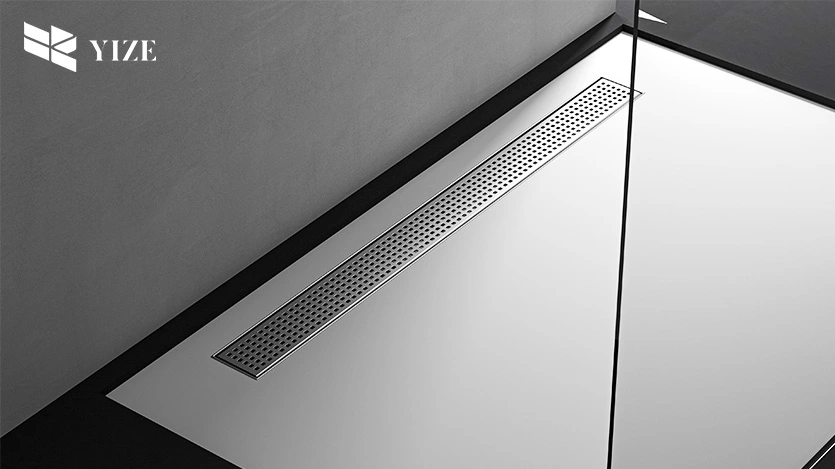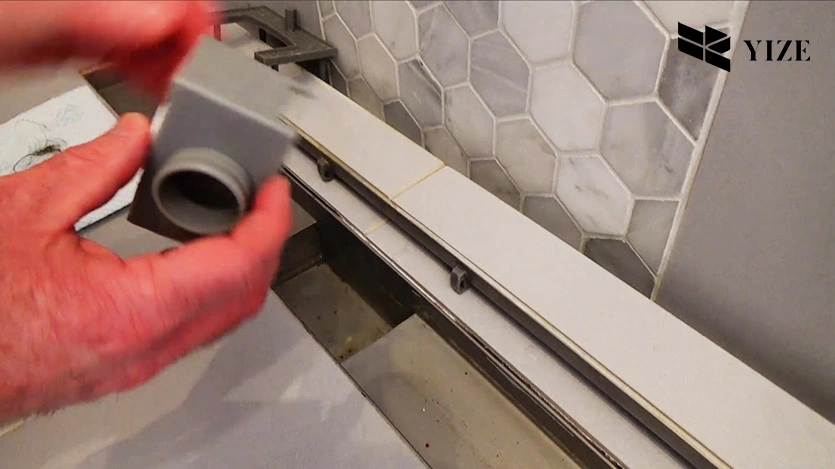
I. Introduction
A clogged shower drain can create trouble in your daily routine and potentially cause long-term plumbing issues. The likelihood of your linear shower drain requiring costly repairs increases, so it is important to maintain your drainage system. Cleaning your bathroom regularly not only saves you money but also keeps it hygienic. The good news? If you don’t have specialized tools or chemicals, everyday materials will do just fine.
In this guide, we’ll examine practical, step-by-step ways to clean your linear shower drain and explain ways to prevent it from clogging.
II. How Often Should You Clean Your Linear Shower Drain?
Along with keeping your shower drain looking clean, it’s also about making sure clogs don’t cause water backup and foul smells.
1. General Recommendations for Cleaning Frequency
- Monthly: Clean a little to get rid of surface debris.
- Quarterly: Do the deeper cleaning to get rid of potential blockages.
2. Factors That Affect Cleaning Frequency
- Usage Rate: The more you use it, the more debris will build up.
- Water Quality: Mineral deposits, for example, from hard water, demand special attention.
Signs that your drain needs cleaning include slow draining, gurgling sounds or unpleasant smells. Being quick can help you save you time and effort later.
III. What Materials Do You Need to Clean a Linear Shower Drain?
Cleaning your shower drain doesn’t require fancy tools. And common household items tend to work best.
Everyday Materials for Effective Cleaning
- Rubber gloves
- Plastic hook or tweezers
- Baking soda
- White vinegar
- Boiling water
- Salt
- Small plunger
These materials are safe, cheap and available. Gloves protect your hands and baking soda and vinegar naturally break down grime.
IV. Key Steps to Clean Your Linear Shower Drain

Shower drain cleaning may sound like hectic work, but breaking it into smaller steps makes it doable.
Step 1: Remove Visible Debris
- Put on a couple of gloves and take off the drain cover.
- Pull out hair and debris with a plastic hook or tweezers.
- Throw the waste in a trash bin.
Step 2: Baking Soda and Vinegar Method
- Put half a cup of baking soda in the drain.
- Half a cup of white vinegar should be added immediately.
- Let the mixture stand for 10–15 minutes. The fizzing action breaks down Grime.
Step 3: Flush with Hot Water
- Rinse away the loosened debris by dumping boiling water into the drain.
- If it doesn’t work, repeat if necessary for stubborn clogs.
V. Additional Everyday Cleaning Methods
If baking soda and vinegar aren’t getting the job done for you, try out these alternatives
1. Boiling Water Method
- Pour boiling hot water into a pan and wait until it boils.
- Pour the water into the drain slowly, in a couple of stages.
- This will help dissolve soap scum and soften small clogged lines.
Safety Tip: Pouring boiling water carefully will always prevent burns.
2. Plunger Method
- Put a tiny plunger over the drain aperture.
- Gently push and pull to make suction.
- When that doesn’t work, repeat until the clog loosens.
3. Salt and Baking Soda Combination
- A salt and baking soda combination: Combine 1/2 cup each baking soda and salt.
- Pour the mixture down the drain.
- Allow to sit for 30 minutes then flush hot water through.
VI. Advanced Cleaning Tips
If you have a deeper clog in the shower drain then you may need some more advanced techniques.
1. Using a Drain Snake
- The drain snake goes into drain opening.
- Navigate with the handle through the pipe and attach to the clog.
- Get the snake out and get rid of the debris.
Safety Tip: After use, clean the snake to prevent contamination.
2. Enzyme-Based Drain Cleaners
- A chemical free option is to choose an enzyme based cleaner.
- Wash the product and let enzymes break down organic material as directed by the product instructions.
- Use monthly for preventative maintenance.
3. Preventative Measures
Clog prevention is easier than clog removal. Here’s how you can stop problems before they even begin.
4. Tips to Prevent Clogs
- Get a drain cover to hold hair and soap scum.
- To avoid build up, you should clean the drain cover weekly.
- Do not pour any grease, oil or coffee grounds down the drain.
- To keep pipes free from clogs, flush the drain with boiling water once a month.
Making a little effort to keep a linear shower drain clean and functional goes a long way.
VII. Why Choose YZDRAIN for Your Linear Shower Drains?

All of YZDRAIN’s products are made and designed with quality and durability in mind. Moreover, their linear shower drains are innovative, and make it easier to clean, as well as, reduce chances of clogs. The design is sleek and helps improve water flow as well as give your bathroom a better look.
YZDRAIN has earned the praise of customers for its reliability and ease of use, and has become the leading choice for the contemporary bathroom.
VIII. Conclusion
Keeping your linear shower drain clean doesn’t have to be a huge task. You can keep your drain clear of clogs and running smoothly by using materials that you already use every day, and with simple techniques. Frequent maintenance prevents problems and keeps your drain running longer. After applying these practical tips you will have a cleaner, more efficient shower for years to come.
FAQs
1. How often should I clean my linear shower drain?
Most homes need monthly light cleaning and quarterly deep cleaning.
2. Can I use chemical cleaners?
Enzyme cleansers work, but they are safer and ecofriendly for day to day use.
3. What should I do if the clog doesn’t clear?
Use a drain snake if you can or call a professional plumber.
4. Is boiling water safe for all drains?
Most drains can safely use boiling water, but refrain from using it on PVC pipes as it will cause the pipes to crack.
5. How can I prevent clogs?
Use a drain cover and just clean it once a week and don’t pour any stuff that can cause contraction down the drain.
